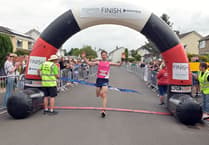BRISTOL Water has introduced two floating rafts at Chew Valley Lake as part of a trial to find ways to improve water quality and create habitats for wildlife.
The rafts are made from floating structures into which wetland plants are embedded. As the plants grow, their roots will hang down into the lake and absorb nutrients, cleaning it naturally and adding spaces to increase biodiversity.
The reservoir experiences phosphates and other nutrients entering the lake which can impact raw water quality and lead to algae blooms.
After the successful installation of the first floating wetland, a second larger raft was introduced at a different section of the lake.
The second raft uses a solar-powered pump and bags of a clay-based filter media which bind with phosphate to help the raft pick up more unwelcome nutrients than the plants could alone.
The pump pulls water from the lake, depositing it onto the clay bags, which then filter and extract damaging nutrients.
Helen Gavin, Bristol Water environment lead for the West Country Water & Environment Group, said: “Using nature-based solutions is an exciting way to see how we can try to improve water quality and improve or create habitat for wildlife at the same time.
“Our floating wetlands trial is allowing us to learn how to install and manage them. If they are effective systems, then we hope to deploy more.“
The floating rafts were designed and installed by ecological engineering company, Biomatrix Water.
Ellen Hebdon, operations manager at Biomatrix, said: “We were delighted to partner with the team at Bristol Water on this innovative project and feel very privileged to have been invited to work on such an important site.”
“The team at Chew Valley Lake continue to monitor both wetland rafts, testing how much phosphorus they remove and how this affects the lake’s water quality.”

.jpeg?width=209&height=140&crop=209:145,smart&quality=75)



Comments
This article has no comments yet. Be the first to leave a comment.